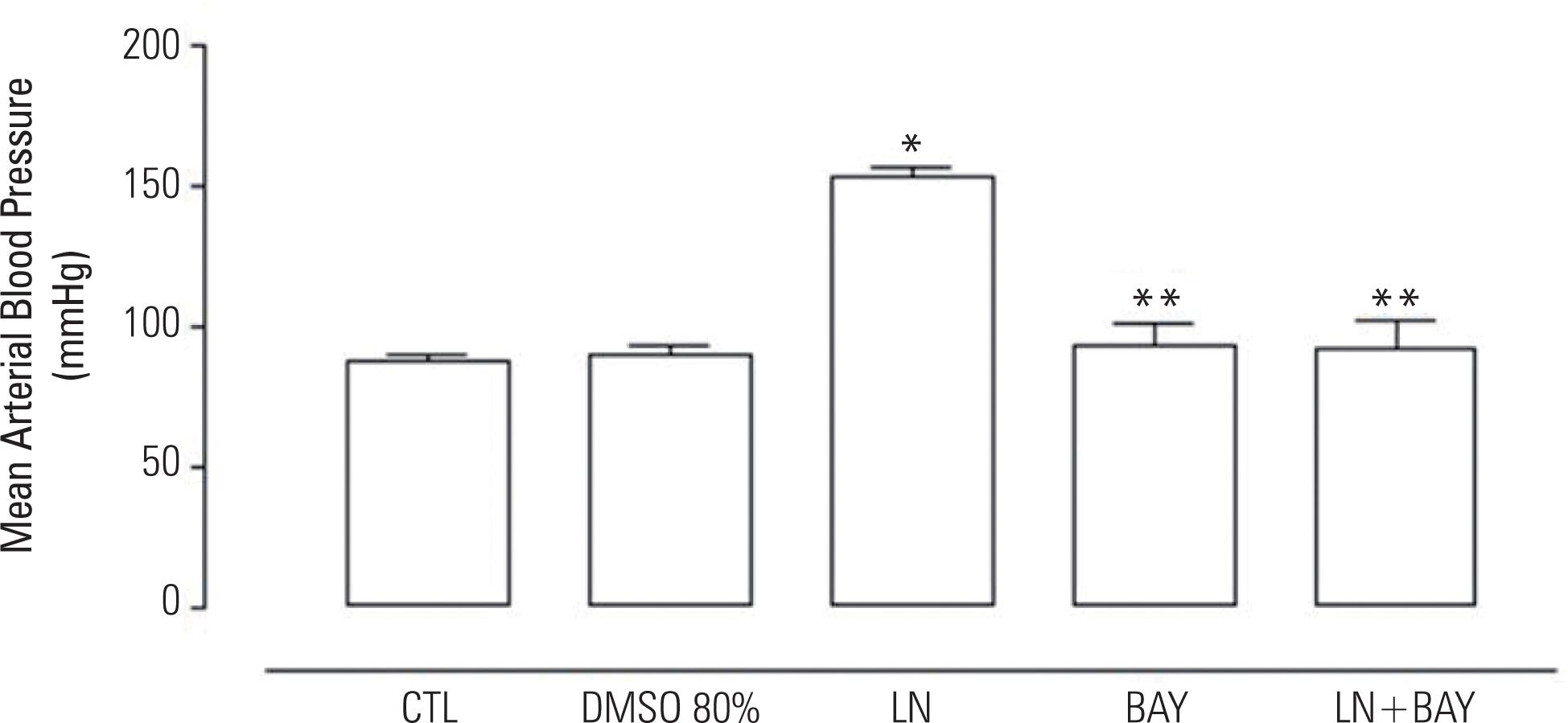ABSTRACT
Objective:
to evaluate the protective effects of BAY 41-2272, a soluble guanylate cyclase activator, on changes in cystometric parameters in rats deficient in nitric oxide (NO).
Methods:
Rats were divided into the following groups: (a) control; (b) DMSO; (c) L-NAME; (d) BAY 41-2272 alone; (e) L-NAME + BAY 41-2272. The NO synthase blocker L-NAME (20 mg/rat/day) was given in drinking water concomitantly or not with BAY 41-2272 (10 mg/kg/day, given by gavage).
Results:
Chronic L-NAME treatment markedly increased the mean arterial blood pressure, and co-treatment with BAY 41-2272 nearly reversed L-NAME-induced rise on mean arterial blood pressure. Non-void contractions were significantly increased in L-NAME group (0.90 ± 0.1 number/minute) compared with either DMSO or control group (0.49 ± 0.1 number/minute), which were prevented by co-treatment with BAY 41-2272 (0.56 ± 025 number/minute; p < 0.05). The threshold and peak pressure increased by 70 and 44%, respectively, after chronic L-NAME treatment, while co-treatment with BAY 41-2272 largely attenuated both effects (27 and 22% increase, respectively). The frequency of micturition cycles decreased by about of 50% in L-NAME-treated rats compared with control animals, and co-treatment with BAY 41-2272 normalized this parameter.
Conclusions:
Our data show that long-term oral administration of BAY 41-2272 counteracts the bladder dysfunction seen in NO-deficient rats, indicating that restoration of the NO-cGMP pathway by this compound may be of beneficial value to treat bladder symptoms.
Keywords:
Guanylate cyclase; Nitric oxide; Urinary bladder, overactive; Rats





